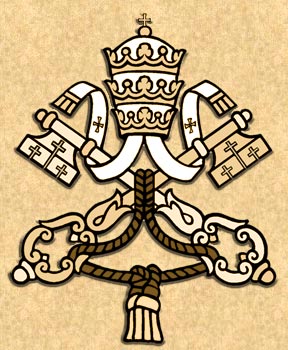Born to a wealthy, noble family, the third of six children, son of Count Giberto II Borromeo and Margherita de’ Medici. Nephew of Pope Pius IV. Suffered with a speech impediment. Studied in Milan, and at the University of Pavia, studying at one point under the future Pope Gregory XIII. Civil and canon lawyer at age 21. Cleric at Milan, taking the habit on 13 October 1547. Abbot commendatario of San Felino e San Graziano abbey in Arona, Italy, on 20 November 1547. Abbot commendatario of San Silano di Romagnano abbey on 10 May 1558. Prior commendatario of San Maria di Calvenzano abbey on 8 December 1558. Protonotary apostolic participantium and referendary of the papal court to Pope Pius IV on 13 January 1560. Member of the counsulta for the administration of the Papal States on 22 January 1560. Appointed abbot commendatario of Nonatola, San Gallo di Moggio, Serravalle della Follina, San Stefano del Corno, an abbey in Portugal, and an abbey in Flanders, Belgium on 27 January 1560. Created cardinal on 31 January 1560 at age 22.
Apostolic administrator of Milan, Italy on 8 February 1560. Papal legate to Bologna and Romandiola for two years beginning on 26 April 1560. Deacon on 21 December 1560. Vatican Secretary of State. Governor of Civita Castellana,Italy in 1561. Governor of Ancona on 1 June 1561. Made an honorary citizen of Rome, Italy on 1 July 1561. Founded the Accademia Vaticana in 1562. Governor of Spoleto, Italy on 1 December 1562. Ordained on 4 September 1563. Helped re-open the Council of Trent, and participated in its sessions during 1562 and 1563. Named prince of Orta in 1563. Member of the Congregation of the Holy Office. Bishop of Milan on 7 December 1563. President of the commission of theologians charged by the pope to elaborate the Catechismus Romanus. Worked on the revision of the Missal and Breviary. Member of a commission to reform church music. Archbishop of Milan on 12 May 1564. Governor of Terracina, Italy on 3 June 1564. Archpriest of the patriarchal Liberian basilica in Rome in October 1564. Count of the Palatine in 1564. Prefect of the Tridentine Council from 1564 until September 1565. Papal legate in Bologna, Romandiola, legate a latere, and vicar general in spiritualibus of all Italy on 17 August 1565. Grand penitentiary on 7 November 1565. Participated in the conclave of cardinals in 1565 to 1566 that chose Pope Pius V; he asked the new pope to take the name. Protector of the Swiss Catholic cantons; he visited them all several times worked for the spiritual reform of both clergy and laymen. Due to his enforcement of strict ecclesiastical discipline, some disgruntled monks in the Order of the Humiliati hired a lay brother to murder him on the evening of 26 October 1569; he was shot at, but was not hit. Participated in the conclave in 1572 that chose Pope Gregory XIII. Member of the Apostolic Penitentiary in May 1572. Worked with the sick, and helped bury the dead during the plague outbreak in Milan in 1576. Established the Oblates of Saint Ambrose on 26 April 1578. Teacher, confessor and parish priest to Saint Aloysius Gonzaga, giving him his first communion on 22 July 1580. To help the Swiss Catholics he founded the Collegium Helveticum.
Saint Charles spent his life and fortune in the service of the people of his diocese. He directed and fervently enforced the decrees of the Council of Trent, fought tirelessly for peace in the wake of the storm caused by Martin Luther, founded schools for the poor, seminaries for clerics, hospitals for the sick, conducted synods, instituted children’s Sunday school, did great public and private penance, and worked among the sick and dying, leading his people by example.
Visiting Holy Rosary Cathedral in Toledo
3 weeks ago









No comments:
Post a Comment